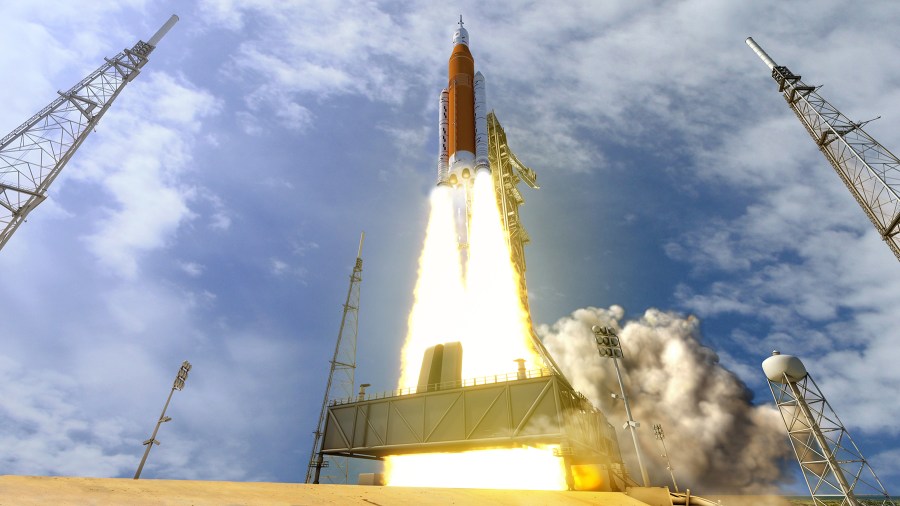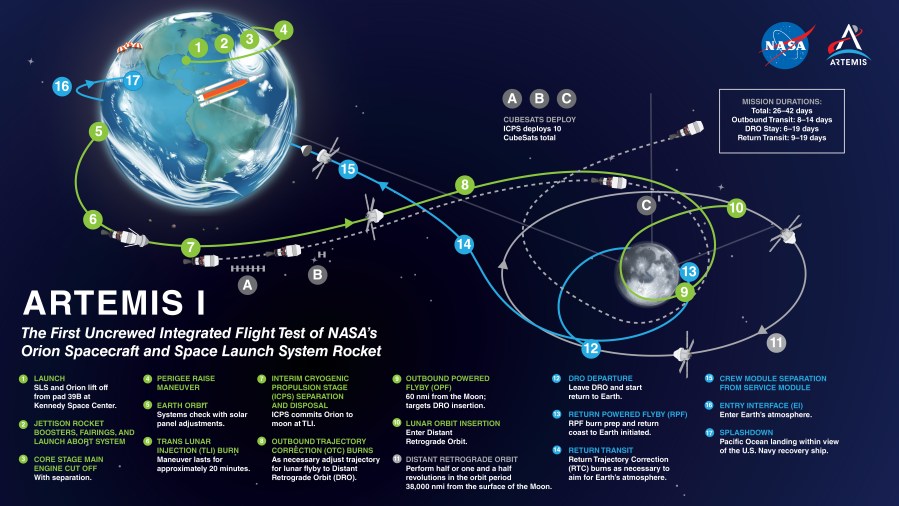TAMPA, Fla. (WFLA) — It’s been 50 years since humans have stepped foot on the moon under the Apollo program but NASA’s Artemis program hopes to change that.
In Greek mythology, Artemis is the twin sister of Apollo. The first mission, Artemis 1, will launch the Space Launch System rocket, NASA’s most powerful rocket ever built, and the Orion spacecraft around the moon.

The fully-assembled rocket stands 322 feet high, taller than the Statue of Liberty. According to NASA, Artemis 1 is just the first in a series of increasingly complex missions.
Artemis 1 is scheduled to roll out to the launch pad earlier than originally planned and will now begin the eight-hour journey to Launch Pad 39B at Kennedy Space Center around 9 p.m. Tuesday.
Engineers have finished up final checks on the massive vehicle following two test countdowns known as wet dress rehearsals. NASA’s Artemis 1 Launch Director Charlie Blackwell-Thompson gave the green light to proceed with roll out Monday evening. NASA will live stream the event beginning at 3 p.m. Tuesday afternoon.

NASA is still targeting Monday, Aug. 29 at 8:33 a.m. ET from Kennedy Space Center for the launch of SLS.

Although plenty of science and research will be onboard the Orion spacecraft, this mission is uncrewed because it will be the first time this rocket ever launches.

Pending a successful launch, mission and landing, Artemis 2 is expected to launch astronauts to orbit the moon no earlier than 2024. Artemis 3 will launch astronauts and land them on the moon – currently no earlier than 2025.






